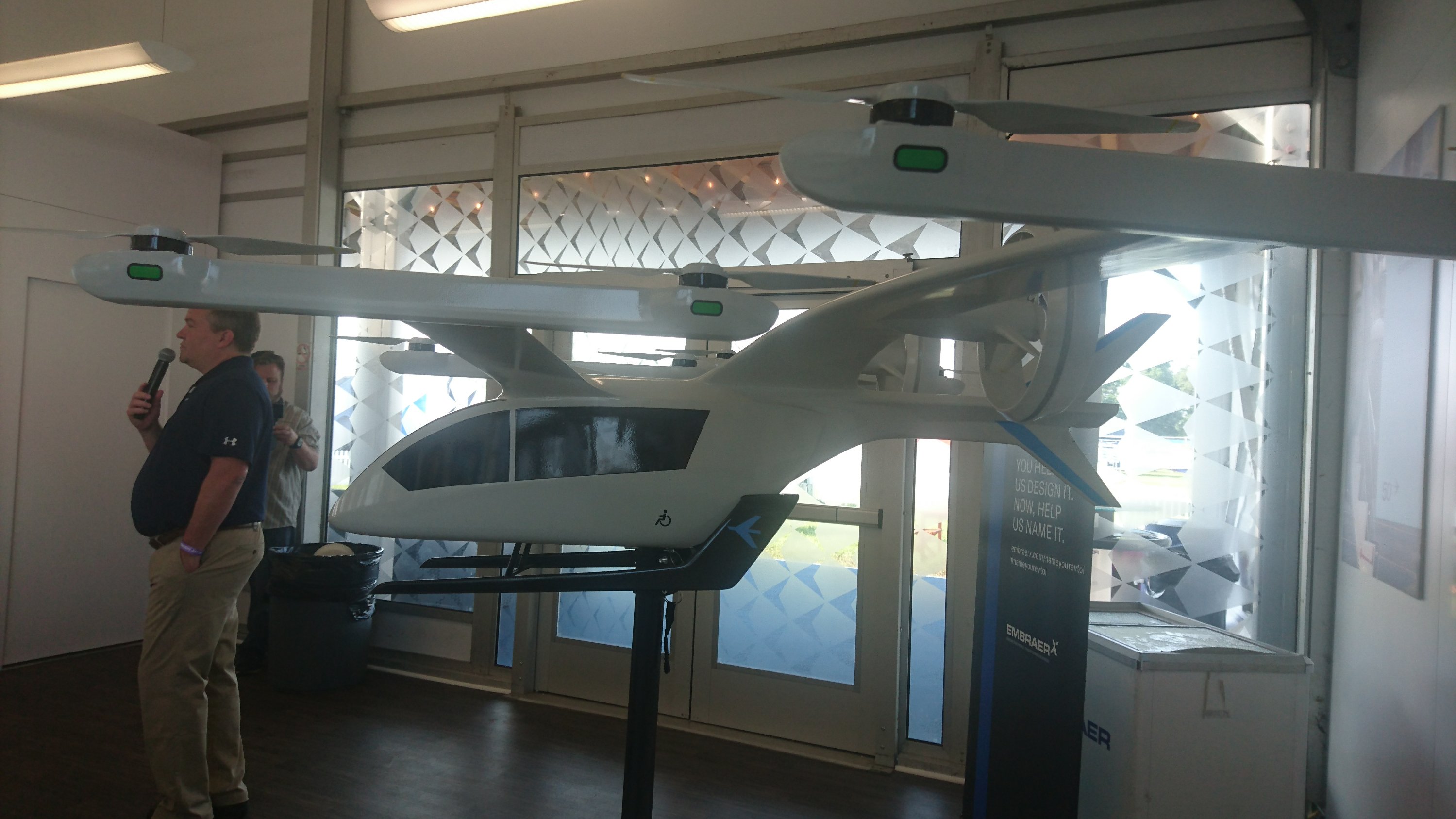Fully booked the 2020 Transformative Vertical Flight of the Vertical Flight Society started with a session of US Government agencies .

Fully booked the 2020 Transformative Vertical Flight of the Vertical Flight Society started with a session of US Government agencies .

The European Helicopter Association (EHA) and the European Union Aviation Safety Agency (EASA) will organize the first EUROPEAN ROTORS fair in Cologne in November 10-12 2020. It will also integrate the renowned EASA Rotorcraft and VTOL Symposium.
The fair will include both conventional helicopter and fast-growing eVTOL. The venue for EUROPEAN ROTORS will be Hall 8 and the Congress Centre North of Koelnmesse, Germany. The motto of EUROPEAN ROTORS 2020 is “It’s for everyone”. The market leaders Airbus, Bell, Leonardo and Safran are supporting the new format both through their presence as exhibitors and with an advisory function.
The fair aims to offer operators, manufacturers, aviation authorities, the supporting industry, mechanics, pilots, customers and suppliers the opportunity to network and also to be informed on state-of-the-art equipment and services, and direct exchange with manufacturers, operators, Approved Training Organisations (ATOs) and maintenance organisations. Visitors will additionally have the chance to discuss present and future regulations as well as to participate in dedicated training.
The three-day event will also include the renowned EASA Rotorcraft and VTOL Symposium. Beside the organizers, the service partner is Messe Friedrichshafen, an experienced exhibition and fairs company, which also stages the established aviation show AERO Friedrichshafen.
Further information, including opening times and prices, is available at www.europeanrotors.eu.
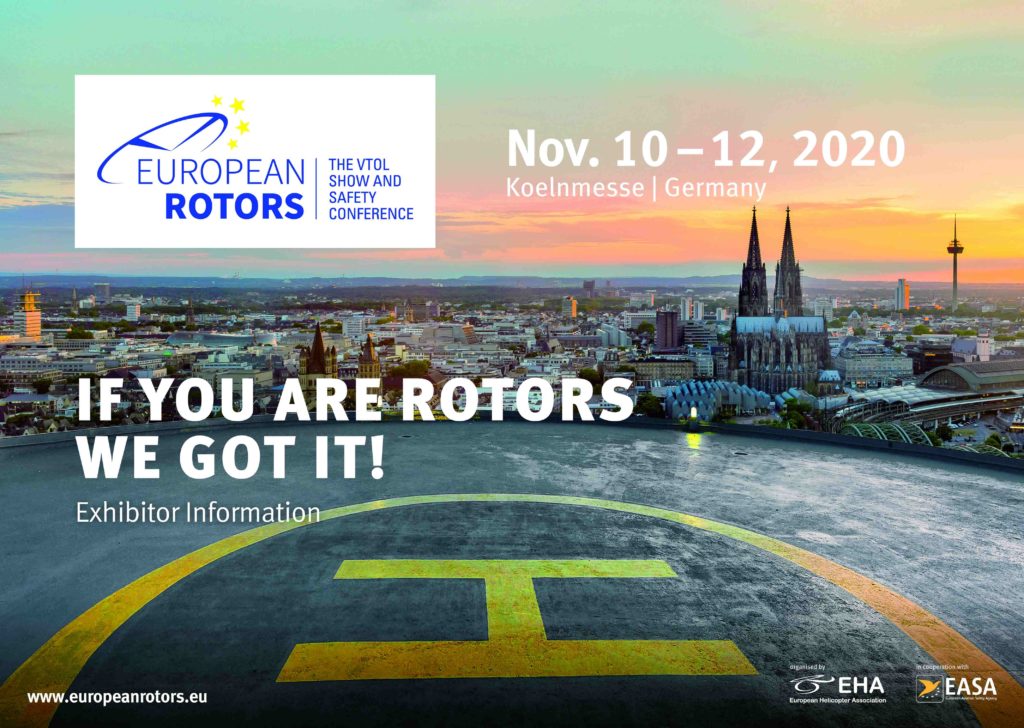
With a record participation of more than 370 professionals the EASA Rotorcraft and VTOL Symposium started in cologne today.
Rachel Daeschler, acting EASA Certification Director opening the conference which is specialy wateched by the eVTOL scene around the world since EASA published its SC VTOL.
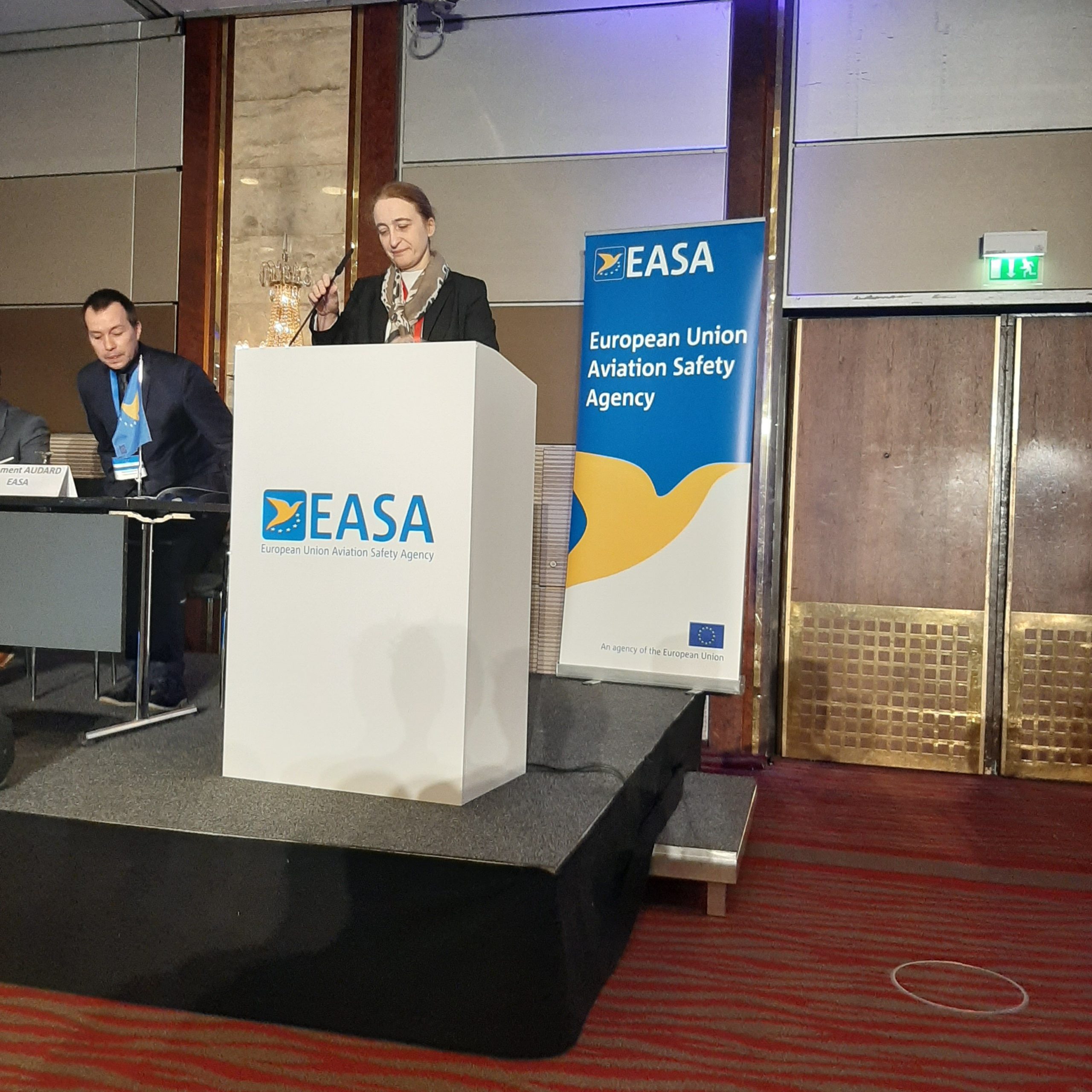
the 3rd eflight forum
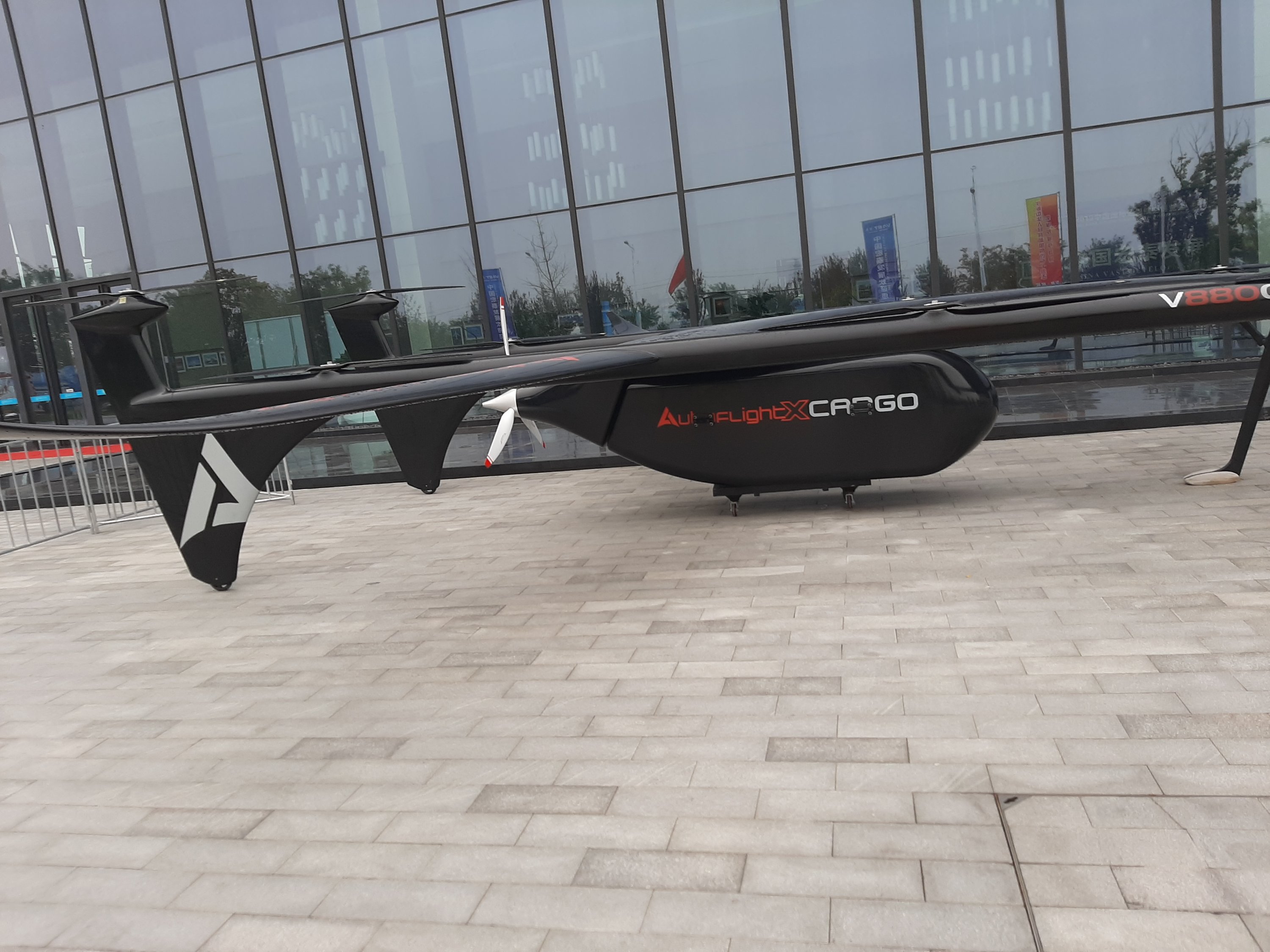
Scylax from Germany which is developing a 10 seat short range electric twin engine aircraft and demonstrate that with the existing technology is possible to step in the area of commercial electric transportation.
announce today that the operator FLN FRISIA-Luftverkehr GmbH Norddeich joined as new shareholder with the goal to bring their practical airliner experience in the development and certification of the new aircraft in order to replace their existing 10 aircraft with the new E10. FNS Frisia connects with their aircraft the North Sea German islands .
Together with FLN we redefined the aircraft in order to fulfil the airliner requirements:
– short takeoff and landing
– landing with strong cross wind
– robust construction with fix landing gear
– low noise
With the existing battery technology we can cover emission free ( CO2 and noise) a 300 km leg. In about 10 Years more than 600 km.
The plan is to have in 3 years a demonstrator which will be in the first phase used by Frisia for Ireland freight , than complete full EASA CS23 certification in max. 8 Years from now. We know that the certification process for such an electric aircraft is very complex. That’s why we fix a realistic certification goal. Of course we will do the best to finish the Certification sooner.
We concentrate now for raising the investment needed for the demonstrator.
Short aircraft specifications
– cruising speed: 300 km/h
– range:300 km
– Start and landing distance: under 300 m
– limit speed Flaps extended (VSO): 50 kts
– landing up to 40 kts side wind possible
– full carbon composite structure
– twin engine (2X260 kW)
– 10 Seats ( including pilot)
– seat abreast: Min. 800 mm
– cabin width:1.35 m
About FLN Frisia GmbH
The aviation company FLN Frisia-Luftverkehr GmbH in Norddeich was founded in 1969 to supplement shipping traffic to the East Frisian islands of Juist and Norderney by AG Reederei Norden-Frisia.
In 2014, the company merged with LFH Luftverkehr from Harle and since then serves as “island fliers” of the airfields Norddeich and Harle the destinations Juist and Wangerooge in regular service. At the moment “the island pilots” have a total of 14 Britten-Norman Islander and Cessna 172/182 aircraft. Maintenance and servicing of the aircraft is done by the subsidiary FLT Frisia Luftfahrttechnik GmbH in Harle. The FLN currently employs 60 people at both locations.
Last year, “the island pilots” transported a total of 133,000 passengers.
On September 14 Volocopter made its urban flight debut at the Mercedes-Benz Museum in Stuttgart. The flight demo was a part of the event “Vision Smart City — Experience future mobility today” held during the weekend. The flight lasted near 4 minutes at about 30 meters altitude. The video of the complete flight from takeoff to landing is below (you may want to turn up the sound volumn to listen to the sound: https://www.youtube.com/watch?time_continue=16&v=mH1zk0KOFho
One noticeable thing was the low noise level of Volocopter which claims 65 decibel at 75 meters. This noise level is comparable with small helicopters’ noise level at 500 meters and is about the same as the background road noise in urban environment.
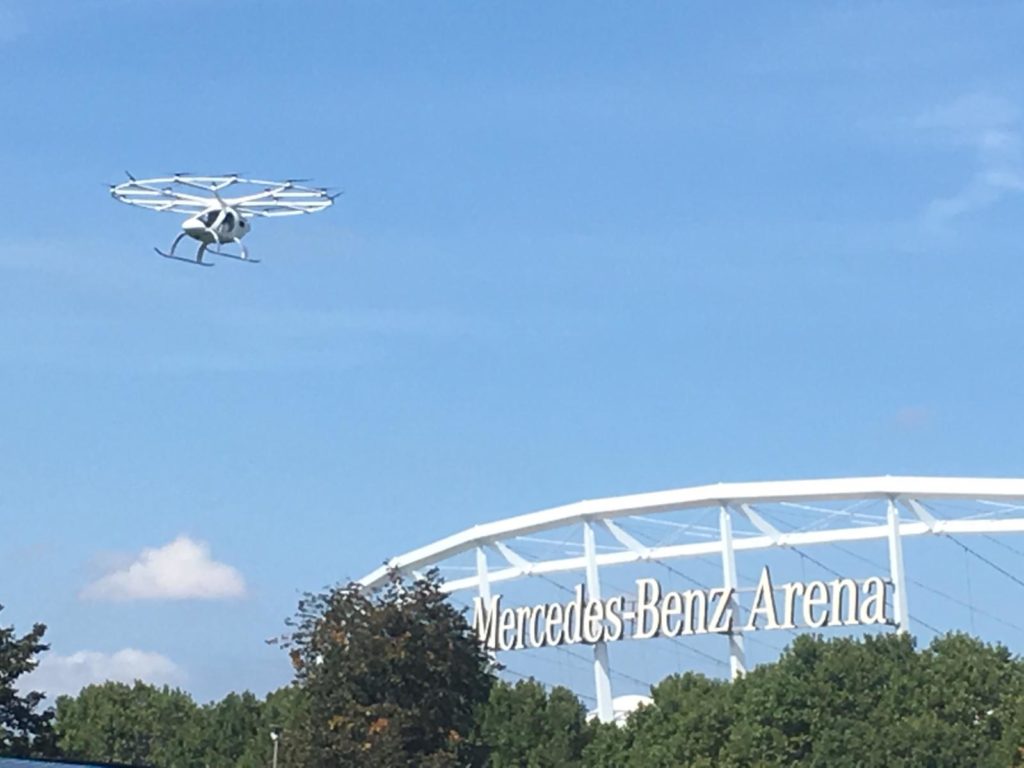
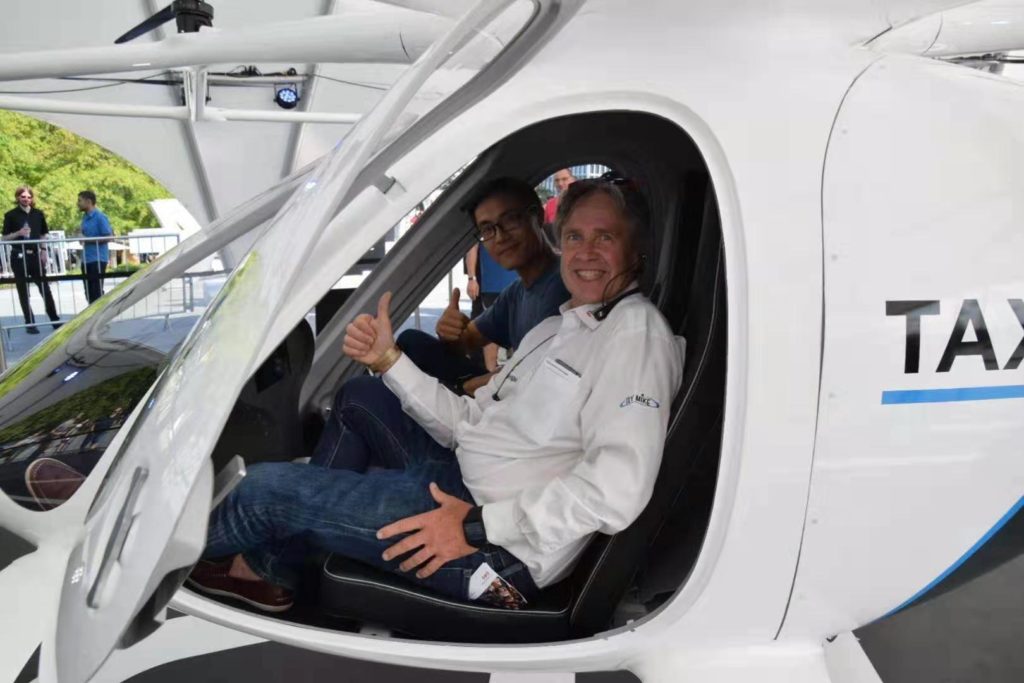
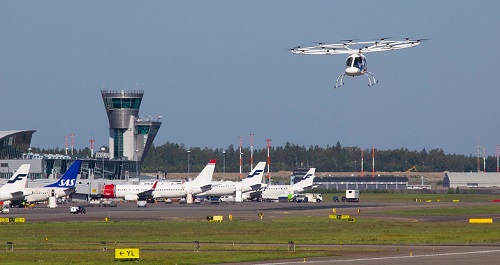
Helsinki, 30 August 2019 – Yesterday, Volocopter performed a flight at the Helsinki International Airport successfully integrated into both the Air Traffic Management (ATM) and Unmanned Aircraft System Traffic Management (UTM) system. Within the Single European Sky ATM Research (SESAR) Programme this demonstration is the final leg of the Gulf of Finland (GOF) u-space project showing how ATM and UTM systems enable Urban Air Mobility (UAM). Urban environments require reliable solutions to enable safe airspace operations given the increasing number of drones and manned aircraft over cities. The GOF U-space flight trial demonstrated how ATM and UTM can act in combination to enable safe and efficient air taxi operation in urban environments, including airports.
At Airventure Gorge Bye announced together with BRS President Enrique Dillon a collaboration in the development of a ballistic parachute system and additional safety features for the eFlyer 2 which is on the way to be certified as the first part 23 electrical aircraft. BRS and Bye have been working together for years.
BRS Aerospace is the only whole aircraft rescue parachute system manufacturer who offers part 23 certified systems.
In the new BRS Aerospace strategy, occupant safety is an integral part of the overall technical and management processes associated with design, development and operation of new aircraft.
In order to improve the survivability rate of occupants BRS Aerospace proposes an integrated safety approach.
An innovative holistic concept to vehicle safety design defines the integrated safety strategy compounding pre‐crash sensing technologies, parachute ballistic recovery systems, landing gear‐airframe crashworthy structural concepts, high-energy absorbing seats, and advanced restraints.
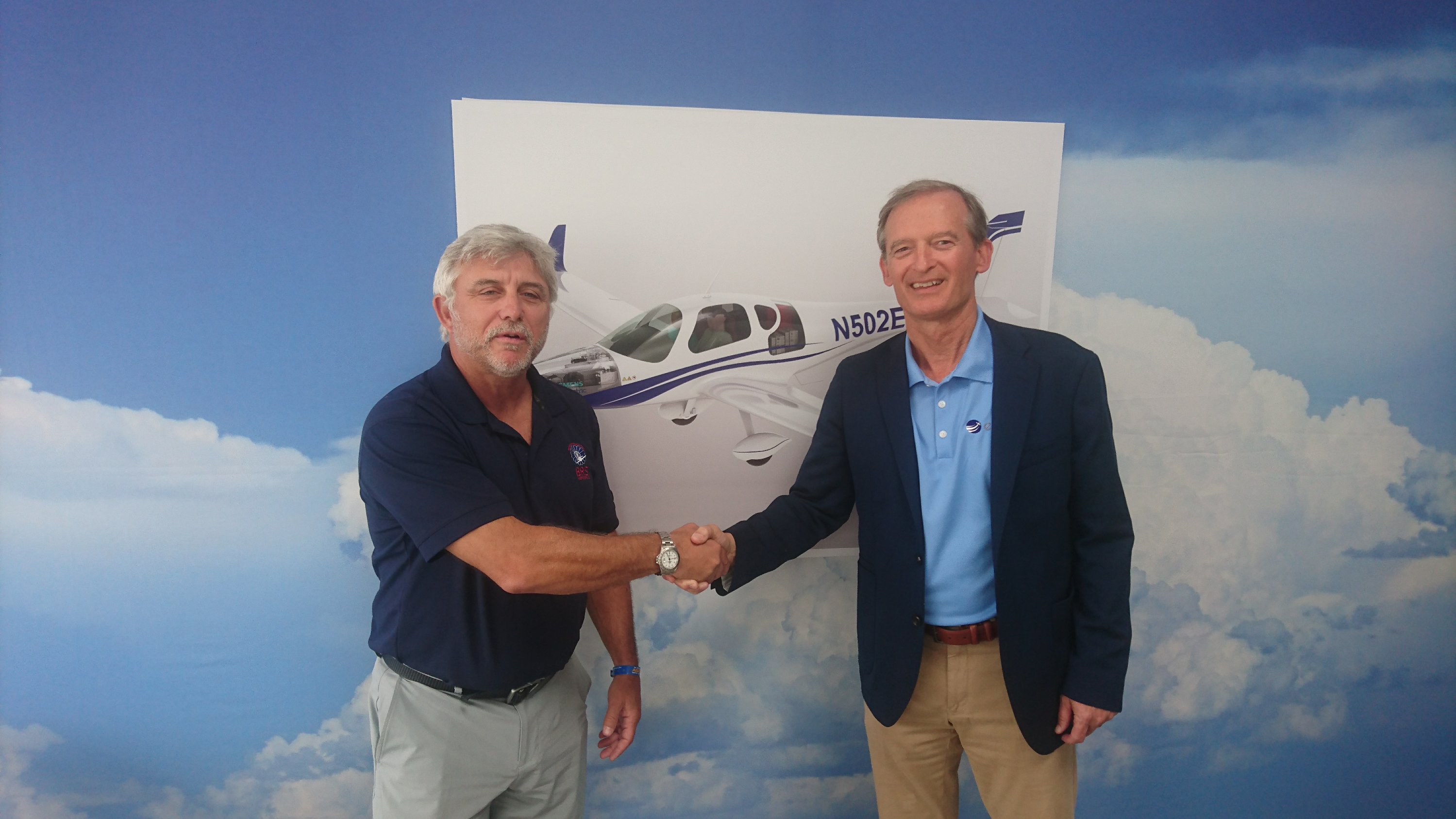
Flight Global reports that XTI Aircraft has selected GE Aviation’s Catalyst engine as the core of the hybrid-electric propulsion system for its in-development TriFan 600 vertical take-off and landing (VTOL) aircraft. For detailed report, go to: https://www.flightglobal.com/news/articles/xti-selects-catalyst-engine-for-hybrid-electric-trif-459849/
After presenting their eVTOL at Airventute Oshkosh EmbraerX anounced that they started a competition to name the new vehicle. You want to participate – just go to www.embraerx.com and you may win a model of the aircraft, or perhaps even a ride with the new aircraft as soon as it will be open for use.
